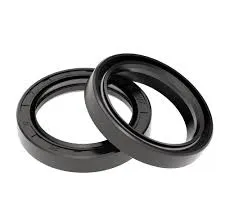10 月 . 05, 2024 20:00 Back to list
oil seal 60x80x10
Understanding Oil Seals The 60x80x10 Specification
Oil seals are essential components used in various mechanical applications, especially in automotive and industrial machinery, to prevent lubricant leakage and protect against the ingress of dust, dirt, and moisture. One specific size that is widely used in these applications is the oil seal with the dimensions of 60x80x10 mm. This article will delve into the significance of these dimensions, their functions, types, and applications, as well as guidelines for selection and maintenance.
What Do the Dimensions Mean?
The designation 60x80x10 refers to the oil seal's dimensions in millimeters. The first number, 60, indicates the inner diameter (ID) of the seal, meaning that it fits onto a shaft or spindle with a diameter of 60 mm. The second number, 80, represents the outer diameter (OD) of the seal, which measures 80 mm across the outer edge. Finally, the last number, 10, denotes the thickness of the seal, which is 10 mm. Understanding these measurements is crucial for selecting the right seal for a specific application, as a correctly sized seal is essential for optimal performance.
Functions of Oil Seals
Oil seals serve several critical functions in machinery. Primarily, they are designed to retain lubricants within a system, ensuring that mechanical parts remain adequately lubricated to reduce friction and wear. Additionally, they prevent external contaminants from entering the machinery, which could lead to premature failure and costly repairs. The effective sealing action helps maintain the integrity of lubricants and extends the lifespan of the machinery.
Types of Oil Seals
There are several types of oil seals, each designed for specific applications and conditions. Common types include
1. Cup Seals These seals have a circular, cupped shape and are ideal for static sealing applications where there is no movement between the sealing surfaces.
oil seal 60x80x10

2. Lip Seals Featuring a flexible lip that creates a tight seal against the shaft, lip seals are commonly used in dynamic applications where there is relative movement between surfaces.
3. Balanced Seals These seals are designed to handle high-pressure situations. They maintain a balance of pressure on both sides of the sealing surface for better performance.
4. Standard Structure Seals Made from various materials including rubber, silicone, and metal, these seals can be tailored to meet different temperature and chemical requirements.
The 60x80x10 oil seal can typically be found in lip seal designs, which are particularly effective for dynamic applications such as in engines, gearboxes, and hydraulic systems.
Selection and Maintenance
When selecting an oil seal, it is crucial to consider several factors, including the operational environment, the type of lubricant used, and the temperature range. Proper installation is equally important; seals should be aligned correctly to prevent premature failure.
Regular inspections and maintenance are also essential to ensure the longevity of oil seals. Signs of wear and tear, such as leaks or visible damage, should be addressed promptly to avoid further complications.
Conclusion
The 60x80x10 oil seal may seem like a small component, but its role in machinery performance is invaluable. By preventing leaks and protecting against contaminants, oil seals contribute significantly to the efficiency and reliability of mechanical systems. Understanding the specifications, functions, and maintenance needs of oil seals is vital for anyone involved in the design, operation, or maintenance of machinery. Investing in quality seals and ensuring proper installation and care can lead to enhanced performance, reduced downtime, and substantial cost savings in the long run.